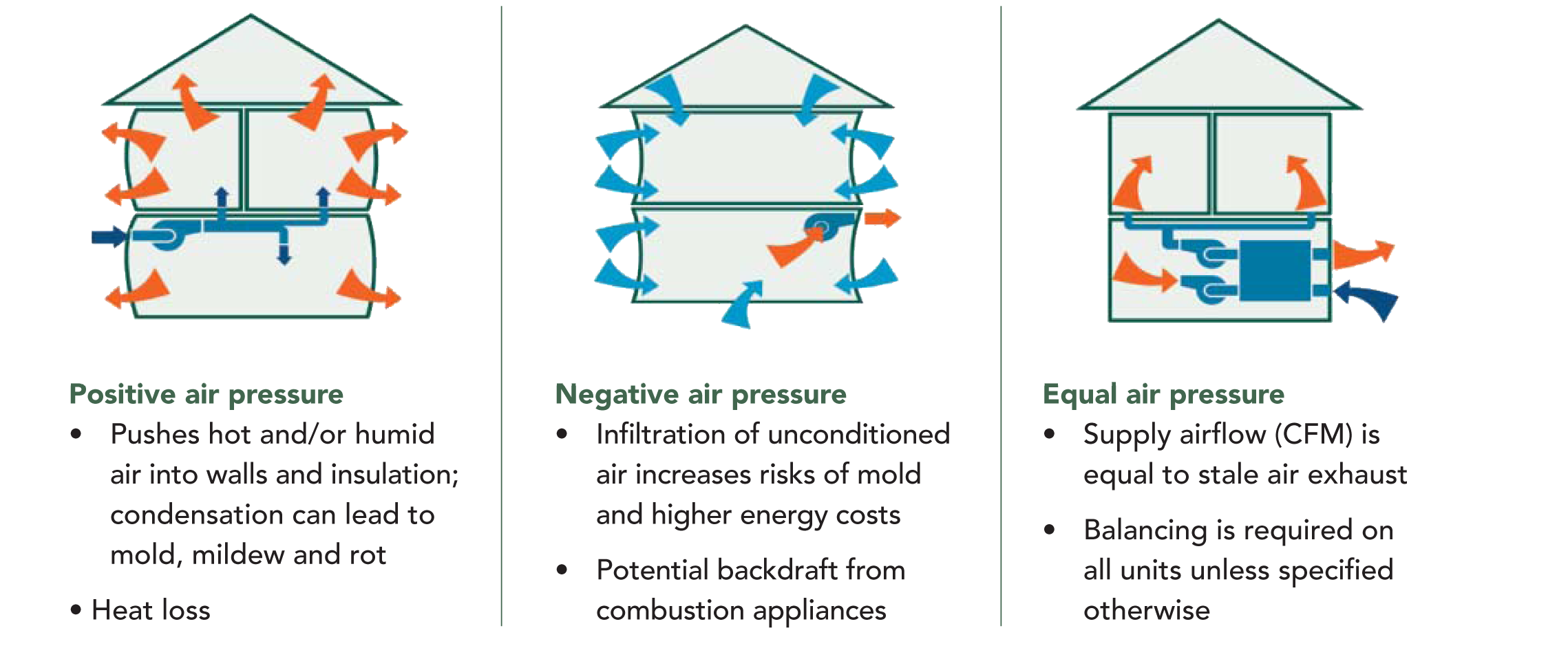Unfortunately the majority of homes, even a new build, experience an out of balance system. Meaning your home is pulling in or pushing out air for no good reason. Maybe you have unknowingly grown accustomed to living with an out of balance home. And there is a lot of talk about a home breathing but these imbalances can be more than that. Plus, ERV’s are available to ensure a tight home still breathes while being more beneficial to your system; that’s a story for another time.
We will use the analogy of a healthy, active person (balanced home) versus someone who is not (out of balance home). If you put both persons on a track and have them exercise, just watch the results. Better yet, they both run a mile to standardize the test. You can expect that the more active person will win the race but that’s not what we are concerned about here. Look at how they are breathing. Who regains their breath faster? Let’s stretch that out to an even longer duration to see the long term effects of imbalances; a marathon. The active person will get to the end, recover faster and not feel as mush wear and tear on their body. The inactive person might not make it to the end, will be winded and they could really hurt themselves with the stress they have put on their bodies.
Now let’s take it a step further and say their shoes are the equipment in your home. You could even give the non-active person the best running shoes and the active person cheap ones, and you would see very similar results. So regardless of putting better quality into an imbalanced system, you are only fighting the inevitable. Placing the best into an imbalanced home will lead to:
- Higher energy costs
- Shorter Equipment Life
- Poor IAQ
I know that’s a pretty farfetched analogy but if you really think about it, the similarities between our bodies and the home as a system are uncanny. A healthy person operates efficiently just as a healthy home does, but you start throwing imbalances into the equation and the efficiency begins to drop.

What is Negative Air Pressure? This is a scenario where the air pressure inside the home is lower than the outside pressure. Since the outside air is applying a greater pressure, it will be forced into the system/space. With the added force of this “unwelcomed air”, both the air conditioner and furnace will be under additional stress which equates to more energy consumption, more wear and tear and ultimately more money out of your pocket. It also causes some very crazy and almost paranormal activity to go on in your home. Since there will be added pressure inside your home, things like doors have been known to unexpectedly open or close and drafts appear, maybe your drapes move, even when the system isn’t running. Spooky, right? And I’m talking about when the exterior doors and windows are shut, not when you have an active breeze blowing through.
- Positive Pressure is the exact opposite; pressure inside the home is greater than that outside.
Common Culprits creating negative pressure in your home:
- Furnace – Hot Air rises and if you have more than one level then lower floors may experience a pressure imbalance.
- Fireplace / Chimney – It’s a hole in your home, what would expect?
- Exhaust Fans (Bathroom or Kitchen) – These pull air out of the home and if they are improperly sized then you may find pressure imbalances.
- Leaky Ducts
- Downdraft Cooktops – These move a lot more air than you might imagine, to the tune of 200-400 cubic feet per minute.
- Laundry Dryers – while it looks like a closed system when the door shuts, it is pulling in air from the space around it

During the summer, your home will draw in warm air which will make you’re A/C work harder to cool it back down. And when warm air meets cooler air there tends to be condensation which, if bad enough, can lead to mold or mildew build up. This in turn leads to poor IAQ and uncomfortable living situations.
During the winter, you can expect a very similar scenario. You are now pulling in cold outside air which again raises your energy costs as your furnace is working extra to heat the cold air that has made its way into your home. While mold and mildew build up may be less of a concern this time around, the winter air tends to be dry and cause lip cracking, nose bleeds, static, etc. Many people add a humidifier to overcome this and again, your humidifier will be working harder to keep your humidity levels where you want them as new air is continually sucked into your home. Another thing to really worry about if you have a gas furnace, the negative pressure can and will backdraft flue gases into your home and that’s not healthy for you and your family.

With a properly balanced home, you can expect:
- Lower Utility Bills
- Longer Equipment Life (Air Conditioners and Furnaces aren’t cheap)
- Better Comfort
- Better IAQ
- No Backdraft of Flue Gases (Any combustible appliances run the risk)
- No Random Drafts
This isn’t a job for a DIY’er as it can sometimes be more difficult to diagnose than you might expect. This is because the pressure difference can vary dramatically from one area to another and you can even find both positive and negative pressures inside the same home. Unfortunately, many technicians may not make the recommendation to you, and until now, you may have never thought to ask.
So long story short, if you are experiencing some unexplainable and “out of this world” events in your home such as doors randomly shutting or opening, curtains swaying when the system is off, smell of gas, temperature inconsistencies from one room to the next, then maybe it’s time to consider asking a professional to complete a negative pressure test.
